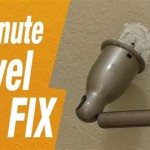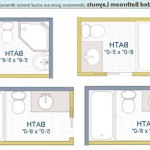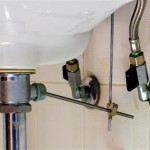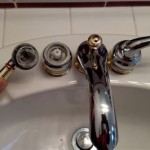How To Remove a Bathroom Exhaust Fan Housing
Bathroom exhaust fans are essential for removing moisture and odors, ensuring a healthy and comfortable environment. Over time, the fan housing may need to be replaced due to damage, wear, or simply to upgrade to a more powerful or stylish model. Removing the housing is a relatively straightforward task, though it may vary slightly depending on the specific model and installation. This article will guide you through the process, providing clear step-by-step instructions and safety tips.
1. Gather the Necessary Tools and Materials
Before you begin, ensure you have the right tools and materials on hand. This will ensure a smooth and efficient removal process:
- Screwdriver: A Phillips head screwdriver is typically required for removing screws from the fan housing.
- Ladder: If your fan is mounted high on the ceiling, you will need a sturdy ladder to safely reach it.
- Protective eyewear: Always wear protective eyewear to shield your eyes from dust or debris.
- Dust mask: For protection against dust particles, it's recommended to use a dust mask during the removal process.
- Gloves: Use gloves to protect your hands from sharp edges or dust.
- New fan housing (optional): If you are replacing the existing housing with a new one, ensure you have the new housing ready.
2. Disconnect the Power Supply
The most critical step before removing the fan housing is to disconnect the power supply. This is crucial to prevent electrical shock and potential injury. Follow these steps:
- Locate the circuit breaker that controls the bathroom fan. It's usually labeled in the electrical panel.
- Turn off the circuit breaker switch, ensuring it is completely off.
- Test the power supply by turning on the fan switch. If the fan does not run, the power has been disconnected successfully.
3. Remove the Fan Cover
The fan cover is typically the first part to be removed. It usually clips or screws onto the fan housing. Follow these steps:
- Look for any clips or screws holding the cover in place. This may involve inspecting the edges of the cover or the surrounding area.
- If clips are present, carefully pry the cover open with a flat screwdriver. If screws are used, unscrew them using a Phillips head screwdriver.
- Once the cover is loose, gently detach it from the fan housing, taking care not to damage any wiring or components.
4. Disconnect the Fan Wiring
Before removing the housing itself, it's essential to disconnect the wiring. This step involves carefully separating the wires connected to the fan motor. Follow these steps:
- Locate the wires connecting the electrical box to the fan motor. They may be secured with wire nuts or other connectors.
- Use a wire stripper to expose a small section of wire if it is covered by insulation.
- Carefully disconnect the wires from the fan motor, noting the color coding of each wire for reconnection later.
- If the wiring is attached to a junction box, identify the wires leading to the fan and detach them from the junction box.
5. Remove the Fan Housing
With the fan cover and wiring disconnected, you can now remove the fan housing. The method will vary depending on the model and installation. However, a common technique involves removing screws that secure the housing to the ceiling or wall.
- Look for screws holding the fan housing to the ceiling or wall. They may be located on the sides or back of the housing.
- Unscrew the screws using a Phillips head screwdriver.
- Once the screws are removed, carefully lift the fan housing away from the ceiling or wall. Be cautious not to damage any wiring or components.
6. Install the New Fan Housing (Optional)
If you are replacing the existing housing with a new one, follow these steps:
- Align the new housing with the mounting holes in the ceiling or wall.
- Secure the housing with screws, ensuring they are securely fastened.
- Connect the wiring to the new housing, ensuring that all wires are securely connected and correctly matched by color.
- Reconnect the power supply by turning the circuit breaker back on.
- Test the fan by turning on the switch. If the fan runs, the installation is complete.
Replacing a bathroom exhaust fan housing can be a simple and effective way to improve ventilation and maintain a healthy indoor environment. By following these steps and safety precautions, you can safely remove and replace the housing with minimal effort.

Not Sure How To Remove Old Bathroom Fan Install New One Doityourself Com Community Forums

Help Can T Remove Old Bathroom Exhaust Fan Housing Doityourself Com Community Forums

How To Replace A Bathroom Exhaust Fan Stanley Tools

Help Can T Remove Old Bathroom Exhaust Fan Housing Doityourself Com Community Forums

How To Replace A Bathroom Exhaust Fan Without Attic Access 12 Step Guide Home Inspector Secrets

Help Can T Remove Old Bathroom Exhaust Fan Housing Doityourself Com Community Forums

Remove Install A Bathroom Fan Grille In 1 Min

How To Replace A Bathroom Fan With Pictures Wikihow

How To Replace A Bathroom Exhaust Fan Stanley Tools

How To Replace A Bathroom Exhaust Fan Stanley Tools
Related Posts







